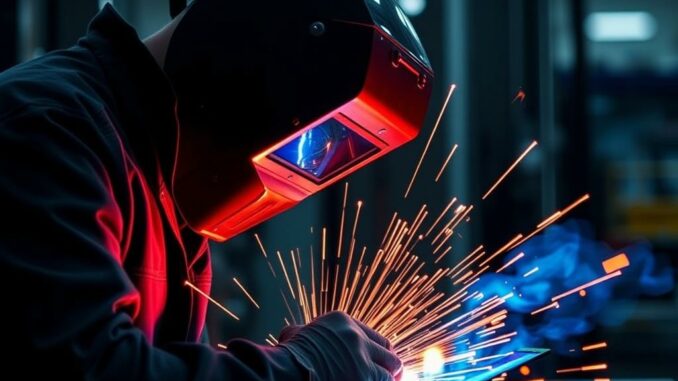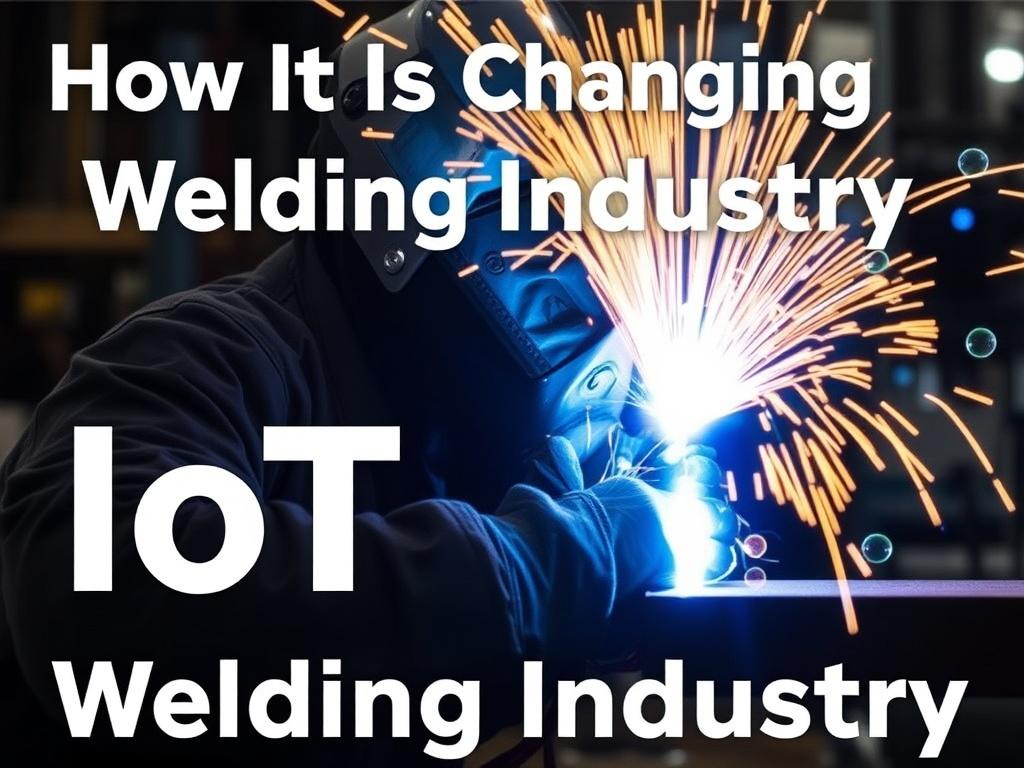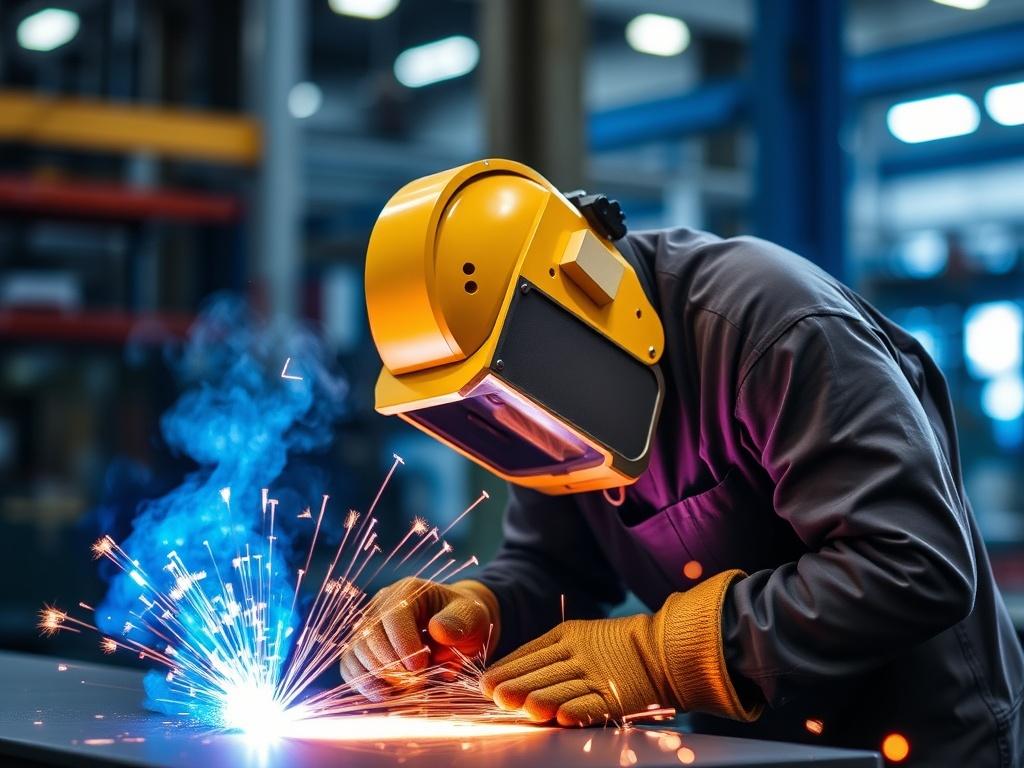
SQLITE NOT INSTALLED
The welding industry has long been the backbone of manufacturing, construction, and countless other vital sectors. It is an intricate craft where precision, skill, and safety intersect to produce everything from towering skyscrapers to the delicate components of spacecraft. As industries evolve, so too must the tools and techniques welders use to stay ahead. Enter the Internet of Things (IoT) — a revolutionary technology that is reshaping the welding landscape in ways few could have imagined just a decade ago.
But how exactly is IoT changing the welding industry? What practical impacts does the infusion of smart technology have on processes, safety, and productivity? In this comprehensive article, we will explore this technological evolution, breaking down the key IoT applications within welding, the benefits they bring, challenges faced along the way, and what the future holds for welders and manufacturers alike.
Understanding IoT and Its Relevance to Welding
Before we dive into specifics, let’s clarify what the Internet of Things really means and why it matters to welding. IoT refers to a network of interconnected devices embedded with sensors, software, and technologies that enable them to collect, send, and act on data, often autonomously. These “things” can range from simple sensors capturing temperature, to complex machines communicating operational status in real-time.
In the case of welding, this connectivity allows machines, tools, and even the welders themselves to interact seamlessly. Imagine a welding torch that adjusts settings automatically based on the material being worked on, or a sensor that detects unsafe gas levels and warns the operator immediately. This is just the beginning of how IoT integrates into the welding workflow.
The Digital Shift in the Welding Industry
The weld industry traditionally relies heavily on manual labor and expert craftsmanship. However, industries across the board have seen significant digitalization, aiming to optimize efficiency, quality, and safety. Welding, a field loaded with potential hazards like fumes, electric shock, and intense heat, stands to greatly benefit from the proactive insights IoT can provide.
With smart devices monitoring every weld, companies can reduce defects, minimize downtime, and improve worker safety dramatically. Data-driven decision-making that once seemed distant has become a practical reality, allowing for rapid troubleshooting, predictive maintenance, and enhanced training strategies.
Key Applications of IoT in the Welding Industry
Let’s explore the specific ways IoT is changing the welding industry, focusing on how connected technologies improve workflows, safety standards, and quality control.
1. Smart Welding Equipment and Real-Time Monitoring
At the heart of IoT’s impact is smart welding equipment outfitted with sensors and controllers. These devices monitor critical parameters such as amperage, voltage, weld temperature, and wire feed speed, transmitting this data to centralized software platforms.
This real-time monitoring empowers supervisors and operators with actionable insights, enabling them to detect irregularities immediately. For example, if a welding machine’s temperature begins to spike, indicating potential overheating, an alert can be triggered to prevent breakdowns or poor weld quality. The ability to monitor weld parameters remotely also means fewer supervisors need to physically be present on the shop floor, helping streamline operations efficiently.
2. Predictive Maintenance: Preventing Downtime Before It Happens
One of the most revolutionary aspects of IoT in welding is predictive maintenance. Traditional maintenance often follows fixed schedules or occurs post-breakdown, leading to costly downtime and production loss. Predictive maintenance, powered by IoT data, uses sensors to track equipment health indicators and predict machine failures before they occur.
For welders, this means the welding machines and robotic arms receive service only when needed. The technology tracks wear on components such as cables, electrodes, and nozzles, enabling timely replacements that save money and reduce workflow interruptions.
3. Enhancing Safety with Connected Wearables and Environmental Sensors
Welding is inherently risky. Exposure to harmful fumes, bright arcs, and intense heat poses significant health hazards. IoT contributes to improved safety through connected wearables that monitor vital signs like heart rate and body temperature of welders, alerting them or supervisors if conditions become dangerous.
Additionally, environmental sensors can detect gas concentrations, smoke, and even arc flash risks within the welding area. These devices provide early warnings, enabling workers to take necessary preventive steps instantly. This technology reduces accident rates and creates a safer working environment.
4. Automation and Robotics: The Role of IoT in Smart Welding Systems
The integration of IoT with automated welding robots marks another major transformation. These robotic welders are equipped with multiple sensors and communication tools that allow them to self-regulate and adapt to changing work conditions.
IoT connectivity enables real-time programming updates, quality control feedback loops, and seamless coordination with other manufacturing systems. The use of collaborative robots or cobots equipped with artificial intelligence is increasingly common in complex welding tasks, reducing human error and increasing throughput.
5. Data Analytics and Quality Control
Data is at the core of IoT-driven welding improvements. Every weld generates data — from heat input to speed, electrode type, and environmental conditions. This information, when aggregated and analyzed, provides meaningful trends and insights.
Welding companies use this data to refine their processes, spot defects early, and meet strict quality assurance standards such as those required in aerospace or automotive manufacturing. Analytics platforms can compare current welds with historical data to detect deviations, ensuring high standards are consistently met.
Benefits of IoT Adoption in Welding
With these applications in mind, it’s important to understand the wide-ranging benefits that IoT brings to the welding industry. These advantages impact weld quality, operational efficiency, worker safety, and overall business performance.
Improved Weld Quality
IoT technology provides welders with precise control and feedback over a multitude of parameters, resulting in stronger, more consistent welds. Real-time adjustments minimize defects like porosity or cracking, which can be costly to repair later.
Increased Productivity and Efficiency
By automating monitoring and maintenance tasks, IoT reduces unplanned downtime, optimizes equipment performance, and streamlines workflows. This boost in productivity can make a significant difference for manufacturing plants facing tight deadlines or high order volumes.
Enhanced Worker Safety
Connected safety devices and environmental sensors protect workers by detecting hazards before accidents happen. Health-monitoring wearables enable companies to take proactive steps, reducing injury rates and improving morale.
Cost Savings
Through predictive maintenance and reduction in scrap and rework, companies investing in IoT solutions in welding save substantial costs over time. Additionally, better energy management and resource use further contribute to savings.
Simplified Training and Skill Development
Data collected from IoT-enabled welders and machines can be used for training purposes, allowing apprentices to learn from real-world metrics and feedback. Digital twins and simulation models enhance skill transfer and reduce errors during live welding.
Challenges of Integrating IoT in Welding
While the benefits are numerous, integrating IoT within the welding sector is not without obstacles. Understanding these challenges is crucial for companies planning to adopt such technology.
High Initial Investment
The cost of outfitting welding equipment with IoT sensors, purchasing software platforms, and training staff can be significant, especially for small or medium-sized businesses. While the long-term return on investment is promising, initial capital expenses can be a barrier.
Cybersecurity Risks
As welding equipment and related systems become connected, they become potential targets for cyber threats. Protecting sensitive data and preventing operational disruptions requires robust cybersecurity measures, which necessitate additional expertise and resources.
Technical Complexity and Integration Issues
Many existing welding machines were not designed to be IoT-ready, posing challenges in retrofitting or connecting older equipment to new digital systems. Compatibility across different machines and platforms can complicate implementation.
Worker Adaptation and Training
Introducing IoT technologies changes workflows and may meet resistance from workers hesitant to adapt to new tools. Thorough training and cultural change management are paramount to ensure smooth transitions and maximize benefits.
Case Studies: IoT in Action Within Welding
To better illustrate the real-world impact of IoT in the welding industry, consider these examples showcasing how companies have successfully leveraged connected technologies.
| Company | IoT Application | Outcome | Industry |
|---|---|---|---|
| BlueArc Manufacturing | Smart Welding Robots with real-time quality monitoring | Reduced weld defects by 40% and increased throughput by 25% | Automotive |
| MetalWorks Inc. | Predictive maintenance sensors on welding machines | Decreased downtime by 30% and maintenance costs by 20% | Heavy Equipment |
| SafeWeld Solutions | Wearable health monitors and environmental gas sensors | Achieved a 50% reduction in workplace accidents | Construction |
The Future of IoT in the Welding Industry

Looking ahead, the fusion of IoT and welding is destined to deepen, bringing even more sophisticated innovations and opportunities. Here are some trends and predictions shaping the future:
Integration with Artificial Intelligence and Machine Learning
AI-powered analytics will further enhance predictive maintenance and quality control by identifying patterns invisible to humans. Machine learning algorithms will enable machines to self-optimize welding processes dynamically for absolute precision.
5G Connectivity and Edge Computing
The rollout of 5G networks and edge computing infrastructure will elevate real-time data processing, allowing instant decision-making directly at the weld site and ultra-reliable remote supervision.
Augmented Reality (AR) and Virtual Reality (VR)
AR-powered helmets and VR training modules will blend with IoT data streams to provide welders with enhanced situational awareness and immersive learning environments. This will revolutionize skill development and operational safety.
More Sustainable Welding Practices
IoT can track energy consumption and emissions in welding operations, encouraging greener approaches. Smart equipment adjustments can optimize power use, cutting down the carbon footprint of large-scale metal fabrication.
How to Get Started with IoT in Your Welding Operations

If you’re a welding professional or business owner considering IoT adoption, here is a simple action plan to guide you:
- Evaluate Needs: Determine which parts of your welding operations would benefit most from IoT integration — quality control, maintenance, safety, or all of these.
- Research Solutions: Identify IoT-compatible welding equipment, sensors, and software platforms tailored to your industry and scale.
- Begin Small: Start with pilot projects to test IoT devices and gather data. Use feedback to refine your approach.
- Train Your Team: Provide comprehensive training to welders and supervisors on using new tools and interpreting data.
- Ensure Cybersecurity: Invest in necessary IT infrastructure and practices to protect your network and data.
- Scale Up: Expand successful pilot projects to integrate IoT more broadly across your welding operations.
Conclusion
The Internet of Things is undeniably changing the welding industry, ushering in an era where smart, connected technologies enhance everything from weld quality to worker safety. While challenges remain, the benefits far outweigh the hurdles, making IoT a strategic asset for companies committed to innovation and excellence.
As smart welding equipment, predictive maintenance, environmental monitoring, and data-driven analytics become standard practice, the welding profession itself is evolving into a high-tech discipline blending skill with digital intelligence. Whether you are a fabricator, contractor, or welder, embracing IoT today means becoming part of the future where precision, safety, and efficiency reach unprecedented heights.
So, are you ready to let IoT transform your welding operations and weld your way into the future?
